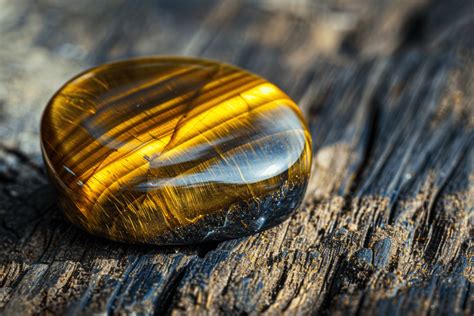In the realm of gemstones, there exists a captivating enigma that transcends mere beauty: the glow in the dark gemstone. These extraordinary stones possess an otherworldly allure, captivating the senses with their enchanting luminescence. From celestial sapphires to ethereal opals, glow in the dark gemstones illuminate the night, evoking wonder and a touch of the supernatural.

Glow in the Dark Gemstone Types
The glow in the dark phenomenon is primarily observed in two types of gemstones:
1. Minerals with Phosphorescence:
Phosphorescent gemstones emit light after absorbing photons from external sources, such as sunlight or ultraviolet rays. This stored energy is gradually released over time, producing a lingering glow. Common examples include:
- Aquamarine: A pale blue to greenish-blue stone that exhibits a weak phosphorescence.
- Calcite: A common mineral that glows in various colors, including orange, red, and yellow.
- Opal: A vibrant stone known for its iridescent play of colors, which can also phosphoresce in shades of green and blue.
2. Minerals with Fluorescence:
Fluorescent gemstones absorb photons and immediately re-emit them as visible light. This process ceases once the external light source is removed. Notable fluorescent gemstones include:
- Diamond: The world’s hardest mineral, diamonds often exhibit a blue fluorescence under ultraviolet light.
- Emerald: A precious green gemstone that fluoresces under both visible and ultraviolet light.
- Sapphire: A stunning blue gemstone that glows red or orange under ultraviolet light.
Applications of Glow in the Dark Gemstones
The luminescent properties of glow in the dark gemstones have inspired a multitude of applications:
- Jewelry: Captivating necklaces, rings, and earrings adorned with these stones create an enchanting aura in the night.
- Home Decor: Decorative pieces, such as sculptures and lamps, infused with glow in the dark gemstones add a touch of magic to indoor spaces.
- Safety: Phosphors embedded in gemstones can illuminate pathways and emergency signage, providing clear visibility in low-light conditions.
- Gem therapy: Some believe that glow in the dark gemstones possess healing properties, calming anxiety and promoting well-being.
Luminescent Measurement
The ability of a gemstone to glow in the dark is quantified using several parameters:
- Phosphorescence Intensity: Measured in millicandela per square meter (mcd/m²), this value indicates the brightness of the gemstone’s phosphorescence.
- Phosphorescence Decay Time: The length of time a gemstone continues to glow after exposure to light, measured in seconds or minutes.
- Fluorescence Intensity: Quantified in watts per steradian (W/sr), this value represents the strength of the gemstone’s fluorescence.
Enhancing Glow Properties
Certain techniques can enhance the glow properties of gemstones:
- Doping: Adding impurities to a gemstone’s crystal structure can increase its luminescence. For example, doping zinc into calcite results in brighter and longer-lasting phosphorescence.
- Annealing: Heating a gemstone to a specific temperature can improve its phosphorescence intensity.
- Surface Treatment: Coatings or chemical treatments can enhance the light absorption and emission properties of gemstones, boosting their fluorescence and phosphorescence.
Tips and Tricks for Enjoying Glow in the Dark Gemstones
- Choose gemstones with high phosphorescence intensity for long-lasting glows.
- Expose the gemstones to sunlight or ultraviolet light for optimal brightness.
- Avoid prolonged exposure to direct heat, as it can diminish the glow properties.
- Store the gemstones in a dark, dry place to preserve their luminescence.
- Consider using a flashlight or ultraviolet lamp to illuminate the gemstones in the dark.
Comparison of Glow in the Dark Gemstones
| Gemstone | Phosphorescence | Fluorescence |
|---|---|---|
| Aquamarine | Weak | No |
| Calcite | Strong | No |
| Diamond | No | Blue |
| Emerald | No | Green |
| Opal | Medium | Weak |
| Sapphire | No | Red/Orange |
| Zircon | Strong | No |
Step-by-Step Approach to Using Glow in the Dark Gemstones
- Identify the gemstone: Determine the type of glow in the dark gemstone based on its luminescence properties.
- Charge the gemstone: Expose the gemstone to sunlight or ultraviolet light for at least 10 minutes.
- Observe the glow: Place the gemstone in a dark environment and observe its luminescence.
- Maximize the glow: Use a flashlight or ultraviolet lamp to enhance the gemstone’s brightness.
- Repeat the charging process: Regularly expose the gemstone to light to maintain its luminescence.
Conclusion
Glow in the dark gemstones possess an enchanting allure that captivates the senses. Their ability to emit light in darkness has inspired countless applications, from magical jewelry to practical safety devices. By understanding the different types of glow in the dark gemstones, their luminescent properties, and the techniques to enhance their glow, we can fully appreciate the enigmatic beauty of these nocturnal treasures.




























